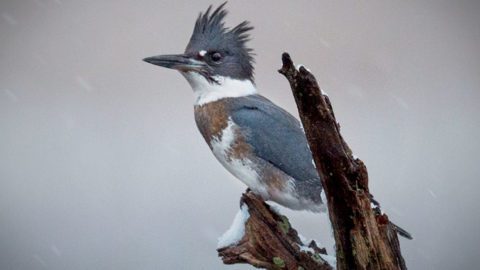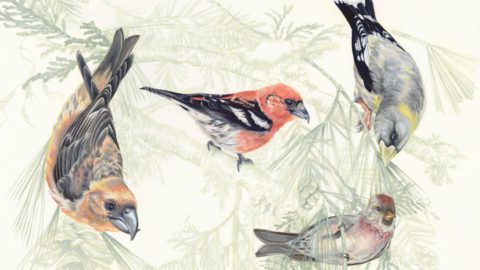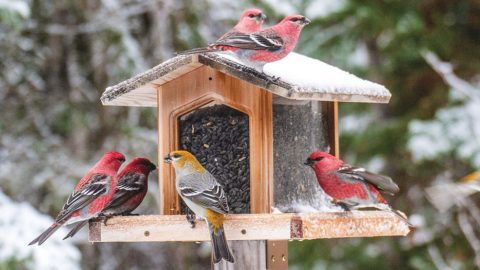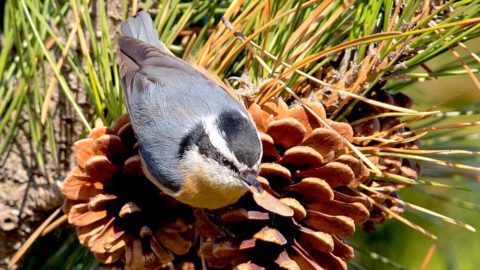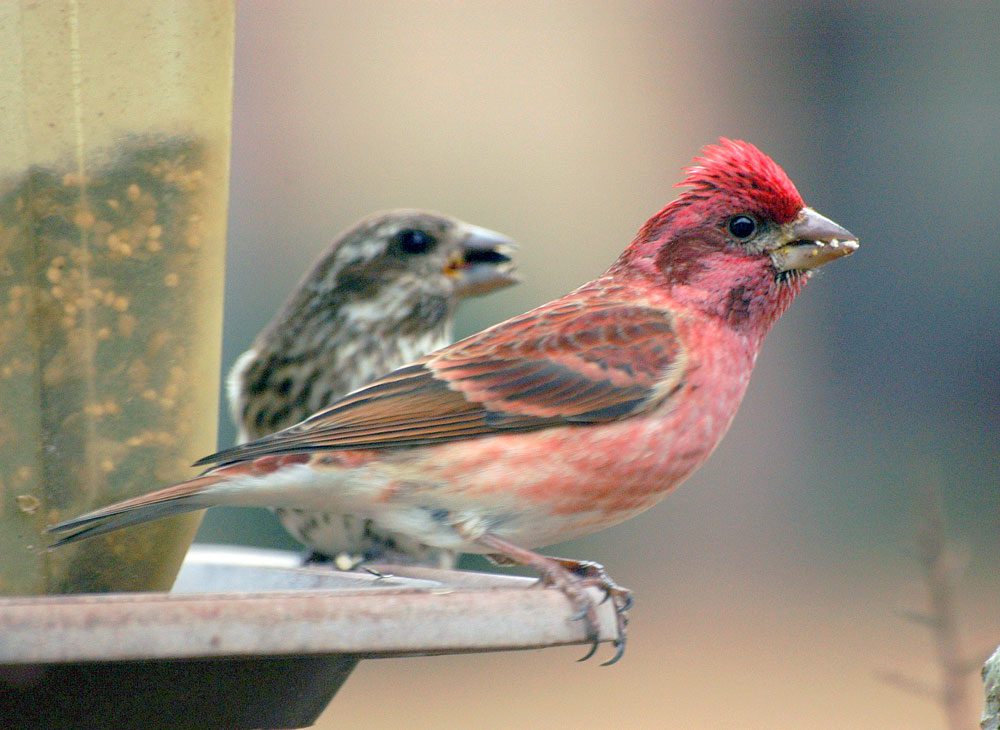Meet the New Wizard of Winter Finch Forecasts: Q&A with Tyler Hoar
By Marc Devokaitis
September 21, 2020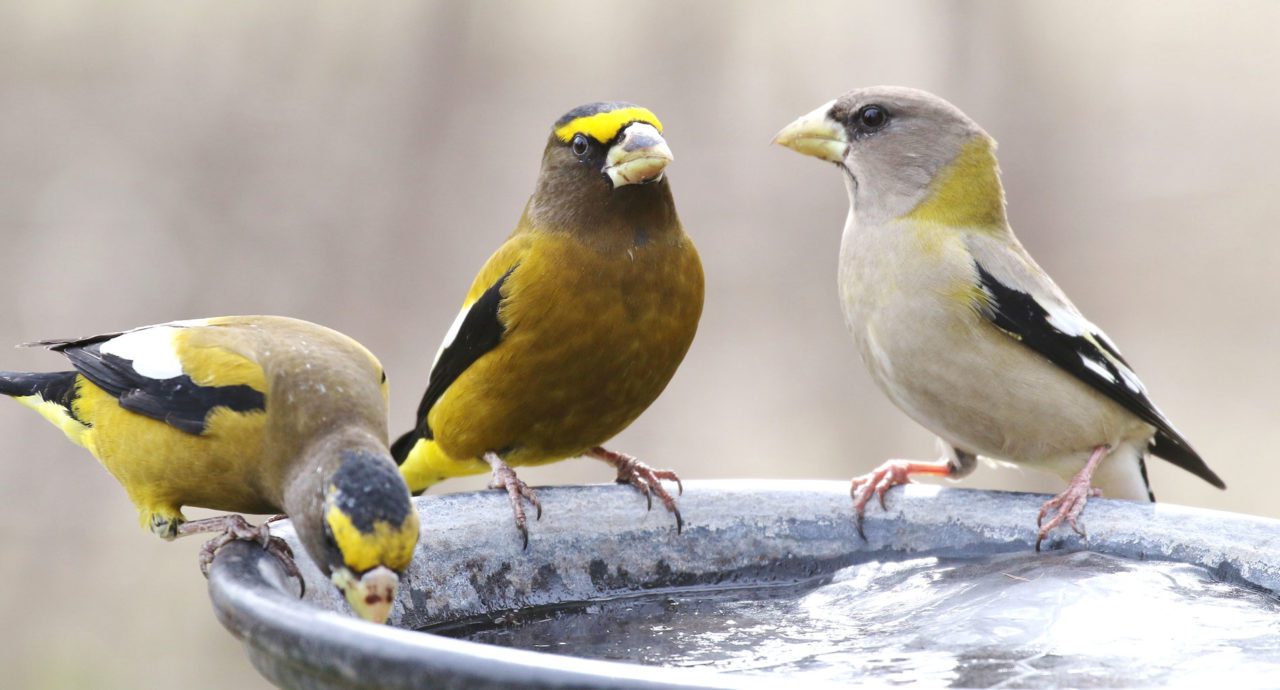
From the Winter 2021 issue of Living Bird magazine. Subscribe now.
It’s a conversation that comes up each autumn, as soon as temperatures dip and migrants start heading south. Will this be a year when winter finches grace our feeders? For many birdwatchers their once-every-few-years appearance seems like a mix of mystery and serendipity. But there’s a science to it.
It was longtime finch “forecaster” Ron Pittaway who helped crystallize the connections between the trees in Canada and the movements of winter finches—birds such as crossbills, redpolls, grosbeaks, and the other so-called “irruptive” species. These birds tend to come south in winters when cone and berry crops are scarce on the trees up north. Each September since the tail end of the 20th century, Pittaway has assessed the state of these tree crops and compiled a prediction for finch movements in the eastern U.S., and his predictions have become legendary for their accuracy.
Now, after more than two decades, Pittaway is handing over the reins.
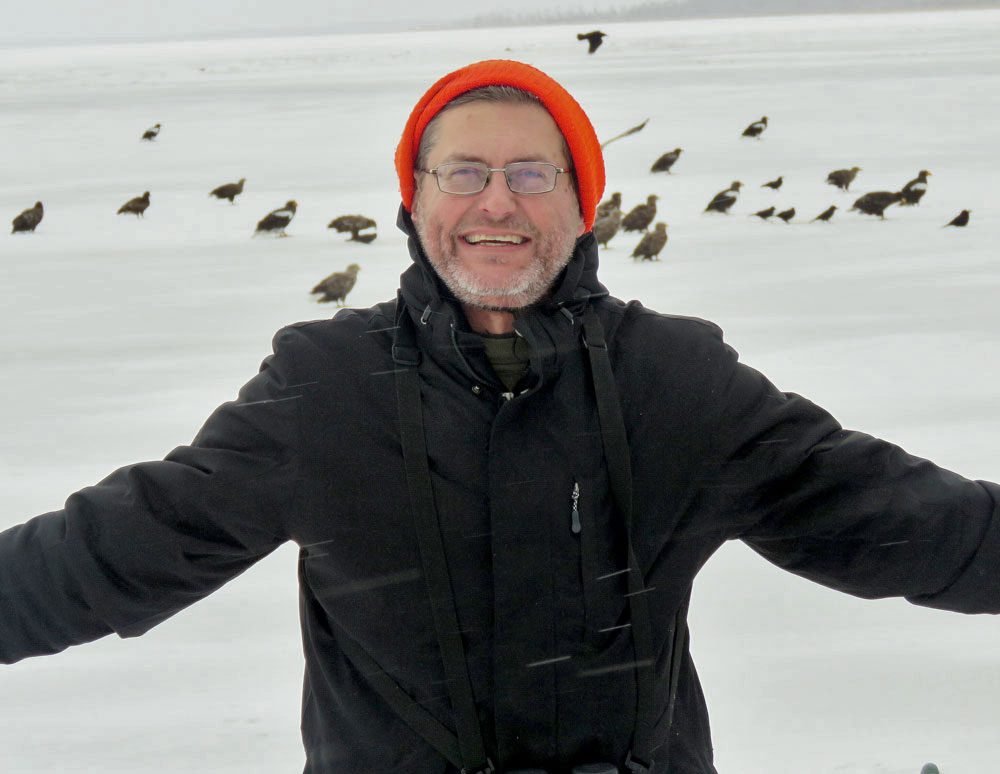
Meet Tyler Hoar, a freelance biologist and ecologist from Oshawa, Ontario, Canada, who’s spent his career traversing the Canadian landscape to observe the natural world. Before the pandemic brought things to a slowdown, he’d had a gig surveying shorebirds in James Bay, Ontario—10 hours by car, 5 hours by train, and 40 minutes by helicopter to “a place where there’s just no one and nothing around,” he says. In between surveying thousands upon thousands of White-rumped Sandpipers and Red Knots, Hoar has the chance to peek into goings-on in the remote boreal forest.
We asked Tyler how he came to be the “new Ron Pittaway,” whether any changes are in store for the annual Winter Finch Forecast, and how this year’s just-released forecast is shaping up.
What was your connection to the Winter Finch Forecast before this year?
Tyler Hoar: I was one of Ron’s observers pretty much since the beginning. Ron and I met at a hawkwatch site near Whitby, Canada, in the early nineties. We started talking about cone crops, and I started sending him a few observations. As his operation expanded, I started checking out more places too. When my work would take me to places like James Bay [in northern Ontario], I would make random pit stops to run into the boreal forest to look at cones. I look at tens of thousands of trees each year.
More on the Winter Finch Forecast
What led to your getting this gig? Were you chosen by Ron?
TH: In a way I lightly lobbied for it. About four years ago I casually mentioned to Ron that if he ever wanted an apprentice, I’d be interested. I didn’t really get much of a response from him, and didn’t think about it too much. This year, just a couple of weeks before Ron announced that he was done with the forecast, I was in central Ontario observing some cone crops and thinking I needed to be in touch with Ron. On the day of his announcement [August 10] I finally called him, and asked him if he would want me to keep it going, and he said: “Okay, it’s yours.”
Tell me how it feels to be stepping into Ron’s shoes. Are you nervous to be taking over for such a legend?
TH: Ron built this forecast from scratch. He researched the species and links to their food abundance, and developed a wide network of contacts from across North America to go out and look at trees. With his enthusiasm he would turn you into a cone observer after a short talk. I wasn’t initially nervous about stepping into Ron’s shoes—but that changed after about a week when I realized how big the Winter Finch Forecast is to American birders. Then, once my contacts and Ron’s contacts started returning cone crop reports from across Canada, New England, and Alaska, I settled right in with the picture starting to build nicely.
How much time did you spend putting the forecast together this year?
TH: Since I took over, I have spent 2–3 hours almost daily, emailing, reading, analyzing, writing, emailing reminders, editing, etc. There are currently 49 contributors from Newfoundland to Alaska.
What is your workspace like?
TH: I have basement office/bunker, with no windows, so no distractions. Like right now I’m missing hundreds of Broad-winged Hawks migrating over my house. I have a 6’ x 4’ piece of cardboard on the wall with a sketch of Canada and the northern U.S., filled with dots and scribbles representing bird and crop data. It’s great because I can step back 10 feet to gaze at it and just ponder….
Do you have plans to update the methodology Ron used?
TH: I like the way it works, so nothing major. One thing I’ve been doing this year is reaching out to more foresters—they tend to have the knowledge of what the year to year seed crops look like. This year a couple of bear researchers based in central and northeast Ontario asked if they could get involved—that was really helpful for getting a read on berry crops in that area.
Also, I’ve been an eBird local reviewer for a decade, and I used eBird data to look at how species were moving in the early summer this year, and to look at sightings from previous years to see how they ended up correlating to the cone crop observations from those years.
Can you give us a quick summary of what this winter will look like?
TH: There should be a good variety this year, with some species moving south in numbers. We’ll be crawling in Purple Finches. And maybe even Evening Grosbeaks too. With the large and widespread outbreaks of spruce budworms this year both species had a large food source during the breeding season. The cone and seed crops they forage on for the winter are poor, and they will have to move in search of food.
What’s your favorite winter finch?
TH: The big, charismatic Evening Grosbeak. The bird showed up every winter in huge flocks at our feeders in the 70s and 80s when I was growing up. When the spruce budworm numbers dropped, I went for a decade [late 80s and 90s] without seeing a single one near home. It’s exciting that we have had some good years lately, like 2018–19. Hopefully this year will equal or surpass that one.
Read Hoar’s first effort since taking over from Pittaway, the 2020 Winter Finch Forecast.

All About Birds
is a free resource
Available for everyone,
funded by donors like you
American Kestrel by Blair Dudeck / Macaulay Library
